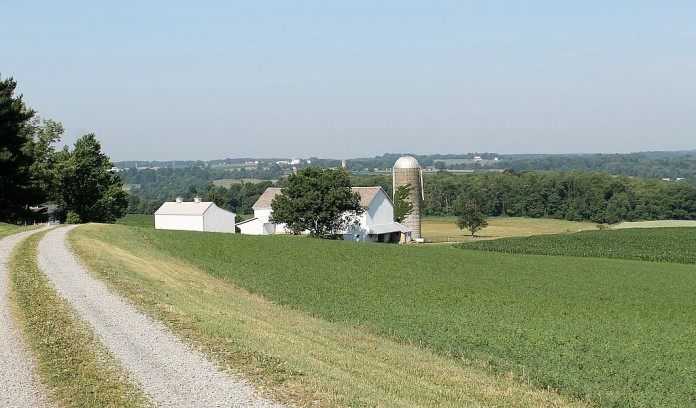U.S. farmland values continue to climb in 2022, following major commodity crop price increases earlier this year, according to a U.S. Department of Agriculture report, issued Aug. 5.
Farm real estate values, which includes all buildings and land on farms, averaged $3,800 per acre, up by $420 per acre from 2021, while cropland values averaged $5,050 per acre, up by $630 per acre from 2021, across the U.S.
While those increases can be a good thing for farmers who already own land, they can also be a barrier for farmers who are just starting out, or who rely on renting land to farm.
Analysis from the American Farm Bureau Federation found the dollar value increases on both farm real estate and cropland values are the biggest increases since the survey began in 1977. The increases are likely driven partly by higher commodity crop prices and more competition for farmland, including for development.
States
Farm real estate and cropland values in Ohio and Pennsylvania are both significantly higher than the national averages.
Ohio’s farm real estate average is $7,200 per acre, up from $6,600 per acre in 2021. Its cropland value average is $7,550 per acre, up from $6,800 per acre in 2021. Pennsylvania’s averages are similar, at $7,350 per acre for farm real estate, and $8,300 per acre for cropland.
West Virginia is lower than the national average on both farm real estate and cropland values, at $3,000 per acre and $3,600 per acre, respectively.
Ohio
A recently released Ohio State University Extension survey also shows cropland values in western Ohio are expected to increase by 8-11.3% in 2022, depending on the region and land class. That follows increases of 7.2-26.6% from 2020 to 2021. That information is based mostly on surveys of ag lenders and appraisers in Ohio, January through April of 2022.
“We’ve seen some big jumps here in the last couple of years,” said Barry Ward, leader of the Ohio State University Extension Farm Office’s production business management program, in an Aug. 11 Ohio farmland leasing update.
Those increases are likely to contribute to higher cropland rental costs. Cash rents in western Ohio are also expected to increase by 5.8-6.8%, according to the survey.
“We typically do see a lag in rental prices … as opposed to those value changes,” Ward said.
Competition
Solar development and other forms of land development are another factor in rising costs. Often, farmers and developers are competing for the same types of land. But it’s hard to define exactly how much development is affecting land values and rental costs, Ward said.
In some areas of Ohio where a lot of development is taking place, it’s clearly having an impact on costs, he said. But things like commodity prices and other local and global factors also affect land values.
“Counties don’t operate in a vacuum,” Ward said. “Sorting that out is always going to be a difficult proposition.”










